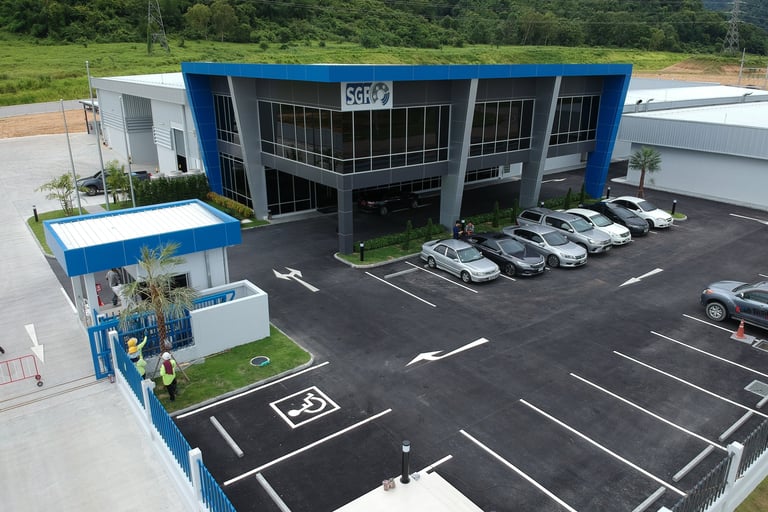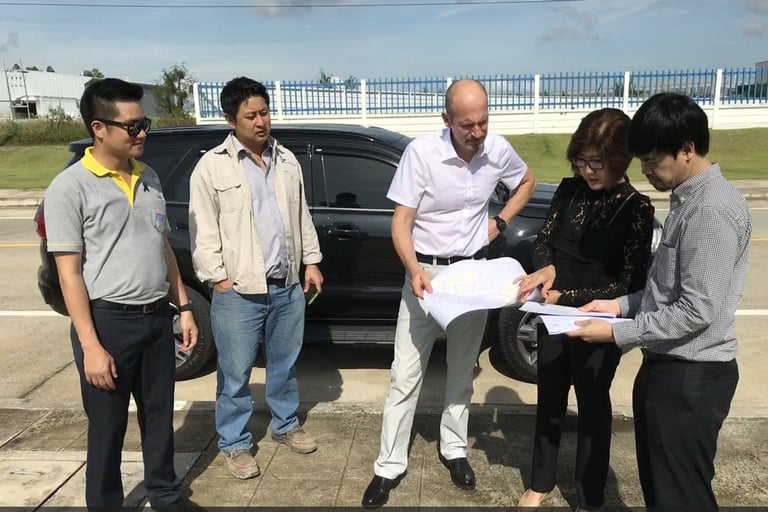Investment in Thailand: Tips for Thorough Preparation
Why Thailand is the launch-pad of choice for European firms—and how smart planning keeps your project on track. How do you start an overseas investment without stumbling? After years of guiding companies to success, Dr. Gunter Denk—founder of the Sanet Group and author of Asia for SMEs and Asia for Pros—offers crisp, actionable advice on project preparation.
MANAGEMENT
6/30/20253 min read
Why Thailand is the launch-pad of choice for European firms—and how smart planning keeps your project on track.
Thailand has become a magnet for European investors looking to escape red tape and excessive costs at home in the EU. The reasons are obvious: Southeast Asia is the region of the future, and Thailand stands out in the region with its superior infrastructure and modern, international industry.
Yet the real question is: How do you start an overseas investment without stumbling? After years of guiding companies to success, Dr. Gunter Denk—founder of the Sanet Group and author of “Asia for SMEs” and “Asia for Pros”—offers crisp, actionable advice on project preparation.
Why Thailand Tops the List
Southeast Asia is poised for expansion, buffered from many of the geopolitical frictions that plague other regions. Within that landscape, Thailand scores points through:
Four deep-sea Ports
Seven International Airports
68 Modern Industrial Estates
Generous investment incentives such as tax holidays and customs exemptions
Add to that a formidable industrial base:
Automotive: 30 OEMs, 1 600 Tier-1 and Tier-2 suppliers, more than two million vehicles built annually, over half exported.
Electronics: 1 000-plus EMS and PCB firms, generating roughly USD 2.35 billion in sales.
Food Processing: the region’s strongest cluster, from raw materials to packaging.
Chemicals: integrated with its own deep-water terminal.
Construction: 55,000 employees and annual revenues topping USD 12 billion.
In short, Thailand offers a clean getaway from an increasingly restrictive EU climate.
In a three-part set, the Sanet Group, Thailand's leading consulting company, provides advice on preparing and implementing investment projects
Rule One: Proper Preparation Beats Speed
Like military strategy, successful foreign investment (FDI) demands clear objectives, the right resources, and disciplined timing. Sanet recommends five core decisions:
1. Preparation is a C-Suite Priority
Hold an initial workshop with the full management team plus key specialists to define:
The motive for investing
Concrete goals
The roadmap and milestones
Possible exit points
A timeline
Project leadership
PRO-TIP: Invite a local advisor to that very first session—you will gauge their competence early and tap into firsthand knowledge of local quirks.
2. Project Leadership—Let the “Next Line” Shine
Appoint a dedicated project manager during the workshop.
Resist the urge for the CEO to run the show; freeing up 70 percent of their time is rarely realistic.
Choose a high-potential manager who can spend at least 50 percent of their time on the project and reports directly to the top.
Build a cross-functional Asia Team including members of internal planning, controlling, sales, quality, R&D, production departments.
PRO-TIP: Staff the team with motivated “second row” talents eager for fresh challenges and unburdened by entrenched habits. Transferring our organization 1:1 to Asia is a “Recipe for Disaster”.
3. Budget & Governance—Draw the Lines Early
Set clear guidelines: meeting cadence, milestones, and a steering committee (executive board, project lead, advisor if needed).
Define a budget: Agree on travel classes, hotel tiers, and expense rules before anyone books a flight—last-minute cuts kill morale and momentum.
Tie funding to learning progress: release money only when new data confirms opportunities and risks.
4. External Support—Targeted, Not Blanket Coverage
Consultants never replace the internal lead, but they are vital when 40-50 percent availability of your project manager on-site or niche expertise—legal, technical, multi-sector—are missing. Yet, then it counts to watch:
Typical tasks for externals: validating the budget, on-site project management, dealing with authorities, site selection, contractor vetting, bid management, and recruiting local executives.
Cost benchmark: about five percent of total investment, spread across 18–24 months as a monthly retainer—far clearer than hourly billing. Treat this as insurance against costly missteps.
PRO-TIP: The internal lead should spend roughly one-third of their time (seven to ten days a month) in Thailand to make real-time decisions.
5. Communication—Inside and Out
Inform employees, council members, banks, customers, and suppliers early and candidly about your plans.
Left in the dark, stakeholders fill the void with rumors—and conflicts are inevitable.
Quick-Reference Playbook
Documented motives and goals form the foundation.
Named project leader + energized core team.
External advisors complement, never replace, internal leadership.
Risk management: milestones and exit points.
Staggered funding aligned with growing insight.
Multi-stage feasibility analysis—doubt means delete.
Benchmark at least two or three locations before committing.
Cost and time discipline shared equally by company and consultants.
Bottom Line
An overseas venture flourishes when strategy, team, budget, and communication align seamlessly. Follow these principles and you will curb risk, maintain speed, and lay the groundwork for a durable presence in the Land of Smiles.
Stay tuned: in Parts 2 and 3 we will dive into feasibility studies and site selection—your next steps toward Southeast Asian success.




As with the German automotive supplier SGF, Sanet has supported many other companies, including Noventa AG in Switzerland, TANATEX in the Netherlands, and Styromatic in Denmark, with their investments in Thailand. From strategy development to company formation, investment promotion, recruitment, and construction management, the Sanet Group is there for you.
Disclaimer
This website shares blogs from the Sanet Group, offering insights and discussions on various topics. Please note, we are not affiliated with the Thai embassy. Our goal is to provide valuable content reflecting the Sanet Group's perspectives. We welcome your engagement and hope you find our posts informative and engaging.
© 2024. All rights reserved.
Contact
Sanet Asian Advisors
+66 2 737 6420
media@sanet.co.th
2/1 Romklao 25/2, Ladkrabang, Khalong Sam Prawet, 10520, Bangkok, Thailand
